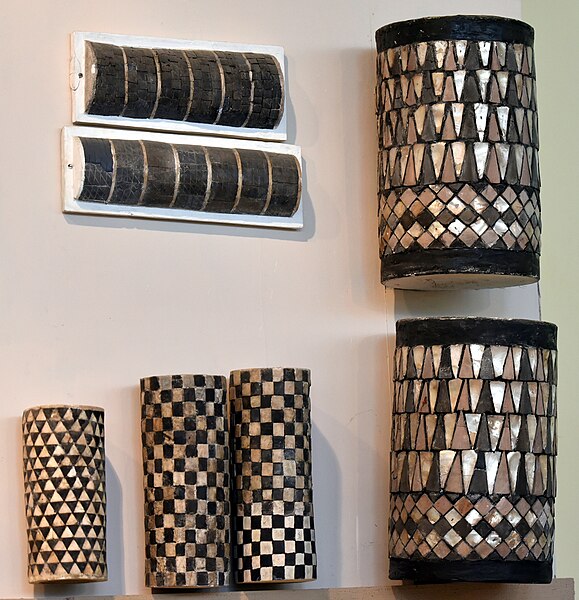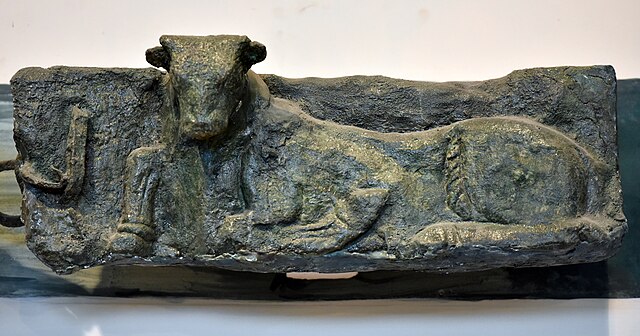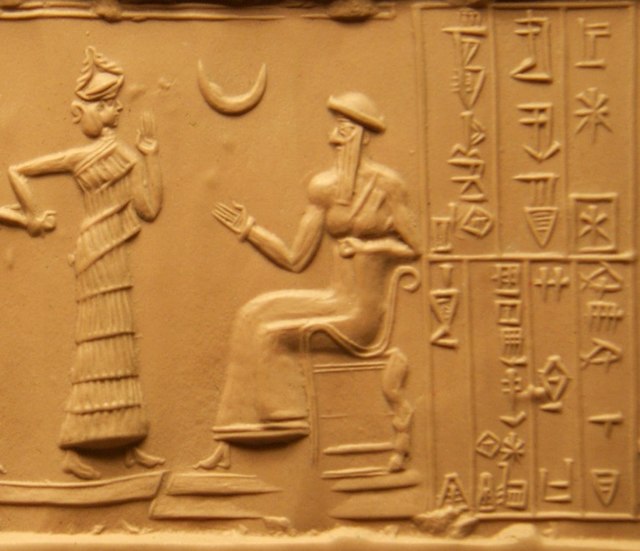Tell al-'Ubaid is a low, relatively small tell west of nearby Ur in southern Iraq's Dhi Qar Governorate. Most of the remains are from the Chalcolithic Ubaid period, for which Tell al-'Ubaid is the type site, with an Early Dynastic temple and cemetery at the highest point. It was a cult center for the goddess Ninhursag.
Tell al-'Ubaid
Stone statue of Kurlil, Early Dynastic III, 2500 BC Tell Al-'Ubaid
Parts of mosaic columns from the entrance to the Temple of Ninhursag at Tell al-'Ubaid, Iraq, 2800-2600 BCE. Iraq Museum
Recumbent cow, part of a frieze once decorated the facade of the Temple of Ninhursag at Tell al-'Ubaid, Iraq, 2800-2600 BCE. Iraq Museum
Ur was an important Sumerian city-state in ancient Mesopotamia, located at the site of modern Tell el-Muqayyar in south Iraq's Dhi Qar Governorate. Although Ur was once a coastal city near the mouth of the Euphrates on the Persian Gulf, the coastline has shifted and the city is now well inland, on the south bank of the Euphrates, 16 km (10 mi) from Nasiriyah in modern-day Iraq. The city dates from the Ubaid period c. 3800 BC, and is recorded in written history as a city-state from the 26th century BC, its first recorded king being King Tuttues.
The name 𒋀𒀊𒆠 URIM5KI for "Country of Ur" on a seal of King Ur-Nammu
Enthroned King Ur-Nammu (c. 2047–2030 BC)
Gold helmet of King of Ur I Meskalamdug, c. 2600–2500 BC
Mesopotamian female deity seated on a chair, Old-Babylonian fired clay plaque from Ur








